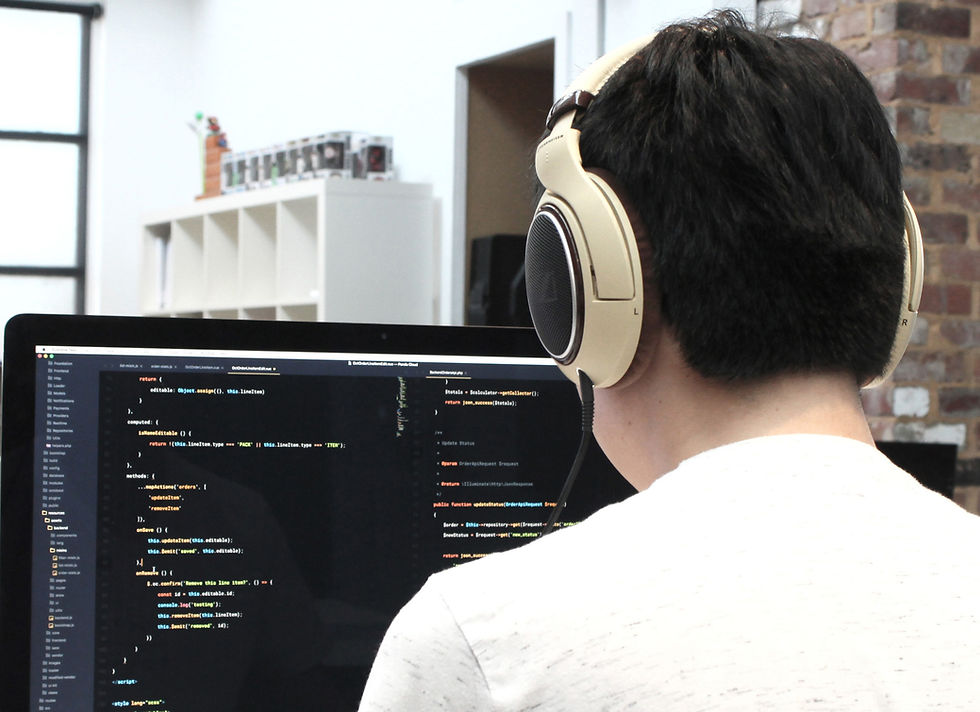Friend or Foe? Navigating the Ever-Changing Landscape of Social Media Algorithms
- ronitroychoudhary
- Mar 28, 2024
- 4 min read

Understanding Social Media Algorithms

In the digital age, social media platforms have become integral parts of our daily lives. From connecting with friends and family to discovering new content and engaging with brands, these platforms offer unprecedented opportunities for interaction and communication. However, lurking beneath the surface of our favorite social media sites are complex algorithms that dictate what content we see and when we see it. Understanding and navigating these algorithms has become essential for anyone looking to make the most of their social media experience.
The Function of Social Media Algorithms

At first glance, social media algorithms may seem like helpful tools designed to streamline our feeds and deliver content that aligns with our interests. However, the reality is far more nuanced. These algorithms are constantly evolving, shaped by a myriad of factors including user behavior, platform updates, and even external events. As a result, what appears in our feeds one day may be drastically different from what we see the next.
Prioritizing Content Relevance

One of the key functions of social media algorithms is to prioritize content based on relevance. Platforms analyze user engagement metrics such as likes, comments, and shares to determine which posts are likely to resonate with individual users. Additionally, algorithms take into account factors such as post recency and the relationship between the user and the content creator. By prioritizing content that is deemed relevant and engaging, social media algorithms aim to keep users coming back for more.
Concerns and Criticisms

While this approach may seem innocuous, it has raised concerns about the potential for algorithmic bias and manipulation. Critics argue that social media algorithms have the power to reinforce echo chambers, where users are only exposed to content that reinforces their existing beliefs and opinions. This can lead to polarization and division within online communities, as users become increasingly isolated from alternative viewpoints.
Amplifying Misinformation

Moreover, social media algorithms have come under fire for their role in amplifying misinformation and disinformation. By prioritizing content that generates high levels of engagement, algorithms inadvertently promote sensationalized or misleading information, regardless of its accuracy. This phenomenon has been particularly pronounced during major events such as elections or public health crises, where misinformation can spread rapidly and have real-world consequences.
Addressing Concerns and Promoting Transparency

In response to these concerns, social media platforms have taken steps to address algorithmic bias and promote transparency. Many platforms now provide users with tools to customize their feed preferences and control the types of content they see. Additionally, companies have implemented measures to identify and reduce the spread of misinformation, such as fact-checking partnerships and content moderation policies.
Navigating Social Media Algorithms Effectively

However, navigating the ever-changing landscape of social media algorithms remains a challenge for users and content creators alike. To stay ahead of the curve, it's important to understand how algorithms work and adapt your content strategy accordingly. Here are a few tips for navigating social media algorithms effectively:
1. Understand the Platform: Each social media platform has its own unique algorithm, so what works on one platform may not necessarily work on another. Take the time to familiarize yourself with the algorithms of the platforms you use most frequently and tailor your content strategy accordingly.
2. Focus on Engagement: High levels of engagement are key to success on social media. Encourage your followers to like, comment, and share your posts to increase their visibility in the algorithm. Engage with your audience regularly and respond to comments and messages promptly.
3. Create Quality Content: Quality content is more likely to resonate with users and generate engagement. Focus on creating content that is informative, entertaining, and visually appealing. Experiment with different formats such as videos, images, and infographics to keep your audience engaged.
4. Stay Up to Date: Social media algorithms are constantly evolving, so it's important to stay informed about any changes or updates. Follow industry news sources and keep an eye on official announcements from the platforms themselves. Experiment with new features and formats to see what works best for your audience.
5. Be Authentic: Authenticity is key to building trust and credibility with your audience. Be genuine in your interactions and avoid using manipulative tactics to game the algorithm. Focus on building meaningful connections with your followers rather than chasing likes and followers.
Conclusion
In conclusion, social media algorithms are powerful tools that shape our online experiences in profound ways. While they offer opportunities for connection and discovery, they also present challenges in terms of bias, misinformation, and transparency. By understanding how algorithms work and adopting a strategic approach to content creation, users and content creators can navigate the ever-changing landscape of social media with confidence.
Read more about social media and its effects, click here.

Want to know more about ownsfare-
Ownsfare is the world's most unique social media platform, aiming to "bring this world a bit closer and make your goals come true one step at a time" by connecting with individuals all over the world, transcending physical limitations such as cities, age, gender, nations, and borders.
With zero distractions and clutter, Ownsfare (from Vasukam) lets you create and share images, audio tales, and opinions with the people that matter to you. Get the latest updates from people all around the globe, chat with old pals, and create your own life experiences. Discover a place where you can be yourself and discuss anything from mundane to life-changing events.




Comments